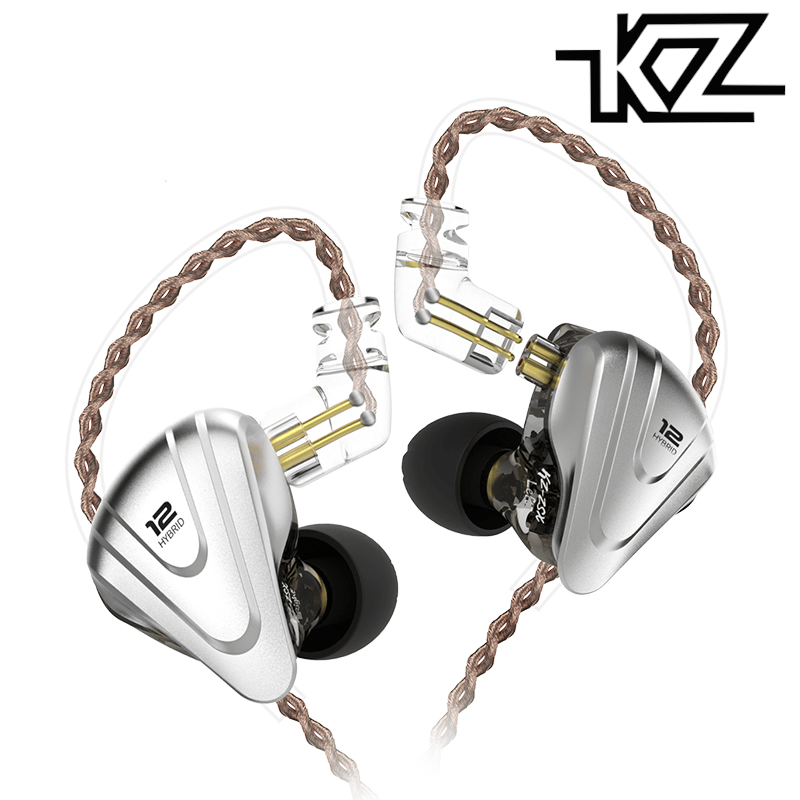Drivers Used in In-Ear Monitors (IEMs) - Dynamic vs Balanced Armature
Dynamic and balanced armatures are drivers most commonly found in in-ear monitors (IEMs). If you have ever wondered what’s the difference between them, you’re not alone. In today’s article, let’s find out more about these two designs – mainly, the technology behind them and the pros and cons of each. That will give us more in-depth knowledge and enable us to make an informed choice as to what is most suitable for our needs.
Dynamic Driver Design
Other than IEMs, dynamic driver design is also used in headphones and loudspeakers. It consists of a set of magnets, a voice coil and a diaphragm. The voice coil is attached to the diaphragm. When a current passes through the voice coil, a magnetic field that interacts with the set of magnets is generated. As the direction of current alternates, the voice coil gets attracted to or pushed away from the set of magnets, resulting in movement in the diaphragm (attached to coil) and consequently, air in front of the diaphragm. It is this movement of air (air displacement) that creates sound.
The dynamic driver is known for a better and more natural-sounding bass largely due to this reason. For a realistic bass response, the driver must be able to displace air to deliver that ‘oomph’ or punch. A bigger diaphragm moves more air, which is also why dynamic-driven IEMs are usually larger than balanced armatures (BA). On most dynamic driver designs, you’ll also notice an air vent, resulting in lesser isolation compared to the BA.
The dynamic driver is designed to span the entire frequency range and often results in less pristine detail (especially on the higher frequencies). However, what you get is a coherent, warm and more natural sounding tone due to the absence of crossovers (like in balanced armatures, which we will cover in the later part of this article.)
An example of a dynamic-driven IEM is the Tanchjim Oxygen, which houses one dynamic driver. Overall it has quite a balanced sound, with a slightly extended treble response. Listen out for the punchy yet balanced full-range bass.
Tanchjim Oxygen

Picture credit: https://www.oardio.com
Balanced Armature (BA) Design


Generalized illustration of a balanced armature design
Picture credit: https://www.sonion.com
In a BA design, the electric current flows through the coil (1) that is wrapped around the U-shaped armature (2). As the current alternates, the bottom part of the armature gets drawn towards either of the magnets and moves up and down. A drive pin (3) then transfers the movements to a stiff aluminium diaphragm/membrane (4). As the membrane vibrates, the volume of air enclosed above it (5) changes to produce sound that escapes from the front nozzle (6).
The armature is referred to as being ‘balanced’ as it remains centered in the magnetic field. And unlike dynamic driver designs, air is not displaced in order to generate sound. The internal movement in a BA design is much smaller than a dynamic driver, hence you get a faster response with more details and clarity for higher frequencies. On the contrary, the bass frequency presentation is less superior than that of dynamic driver designs.
The BA can be tuned to cover a specific frequency (hence they are primarily used in hearing aids) based on the vibrations per second, but the range tends to be limited. Thus multiple drivers are required in a pair of IEMs to complete the sound. BAs are incredibly small (as small as 5mm on their longest side) and lightweight, so as many as twelve can be packed into an IEM.
For example, the KZ AS16 contains 8 balanced armatures on each side.
KZ AS16

Picture credit: https://www.oardio.com
A crossover will be required as its job is to split the sound signal into multiple frequency bands and send them to different drivers. But it is also because of the crossover and resonant frequency in each BA casing that BA IEMs come across as less natural-sounding compared to dynamic driver IEMs. In addition, they also tend to cost more since more components (drivers) are required to achieve good control on the frequency response.
Conclusion
In conclusion, both dynamic and BA driver designs have their pros and cons. A summary of what we’ve covered so far:
Dynamic
|
Pros |
Cons |
|
|
Balanced Armature
|
Pros |
Cons |
|
|
The main sonic difference between both is their strength across different frequency ranges, resulting in hybrid IEMs being born. The aim in using hybrids is to create a scenario where you can have the best of all worlds. In hybrid IEMs, you can typically find one dynamic driver that is used to tackle the bass response in conjunction with multiple BA drivers to give clarity and detail to midrange and treble frequencies.
For example, the KZ ZSX houses one dynamic driver coupled with five balanced armatures. The bass is powerful and it also has an open soundstage due to the clarity and detail in the treble frequencies.
KZ ZSX

Picture credit: https://www.oardio.com
Regardless of design, they all excel in different situations and it is hard to definitively say which design is best - simply because the application of designs in every IEM is different, and everyone’s ears are different too. But we do hope this article on dynamic and balanced armature drivers is useful to you, and now you would know what to listen out for when trying on IEMs for yourself. Do leave us a comment below to let us know your views and comments on the topic.
